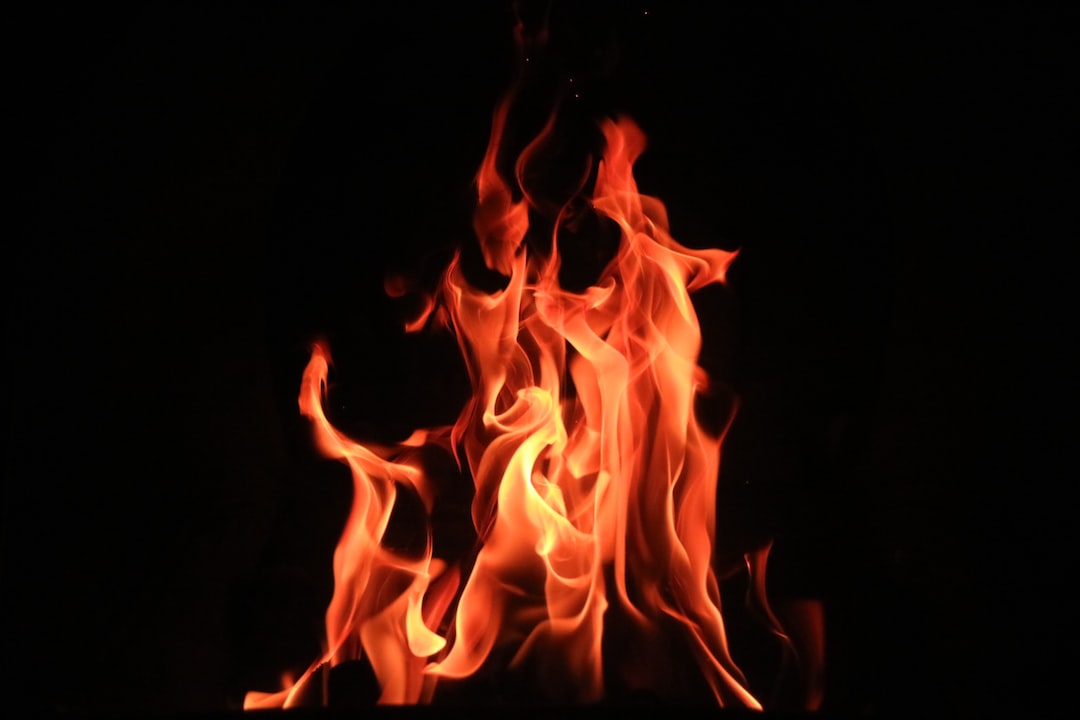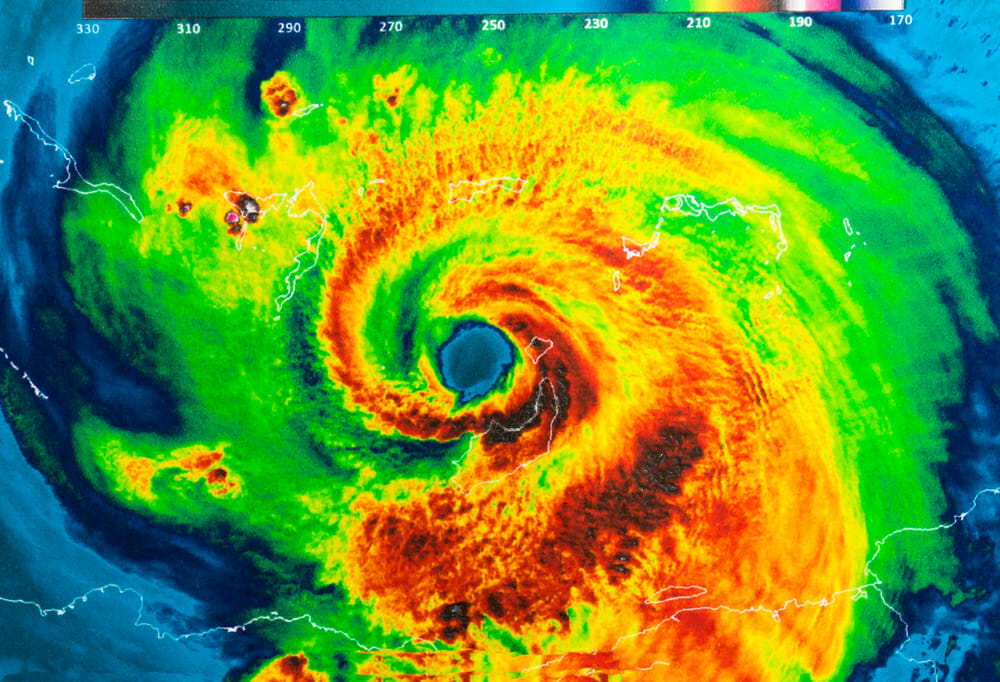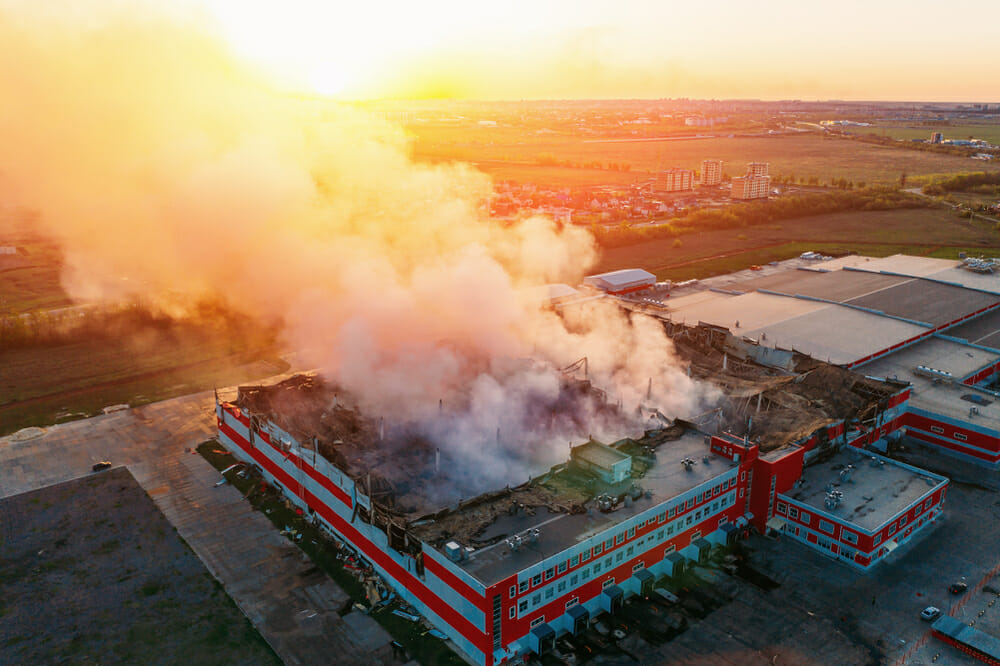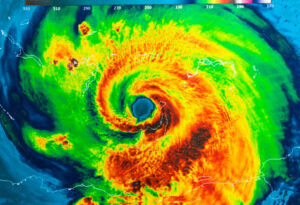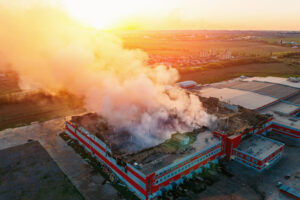Key Facts about Asbestos Fires:
– Asbestos is resistant to fire and high temperatures.
– It contains lightweight fibers that are non-flammable and non-combustible.
– Different types of asbestos have varying ignition temperatures.
– Asbestos becomes hazardous to health when released into the air during hurricanes, fires, tornadoes, or other extreme activities.
– Safety measures and regulations are necessary for managing the risks of asbestos during and after fires.
Do you own an older commercial or residential property and are concerned about an asbestos fire? If yes, understanding what asbestos is, and why its fire-resistant properties may pose a threat during and after a fire is crucial.
Asbestos was extensively used in the construction industry due to its remarkable heat-resistant and insulating properties. However this everyday material harbors a significant risk when it catches fire or is exposed to extreme heat. The subject of asbestos and its relation to fires is intricate, comprising several aspects including the various types of asbestos, their respective ignition temperatures and inherent health risks.
In this guide, we at Insurance Claim Recovery Support provide fundamental insights on asbestos and its fire-resistant nature, aiding you to understand the risks and necessary safety measures. By the end of this comprehensive guide, you’ll be one step closer to ensuring the utmost safety of your property and occupants during the unfortunate event of a fire.

The Presence of Asbestos in Buildings and Homes
As we delve deeper into the topic of asbestos fires, it’s crucial to recognize the widespread presence of asbestos in buildings and homes, especially those constructed or renovated before the 1990s.
The Prevalence of Asbestos in Buildings Constructed or Renovated Before 1990
In the past, asbestos was a popular material in the construction industry due to its fire-resistant properties. In fact, it was commonly used in many building materials, such as insulation, roof and floor tiles, textured paint, siding, and more until the U.S. Environmental Protection Agency (EPA) banned new uses of asbestos in 1989. However, it’s important to note that uses established prior to the ban are still legal. Therefore, if your property was built or renovated before 1990, it’s very likely that it contains asbestos materials.
These materials could be anything from roofing felt, ceiling products, flooring, paints, insulation, to cement board, gardening products, and pipe lagging. It’s essential to be aware of these potential sources of asbestos in your property, as they can pose serious health risks if disturbed or burned in a fire.
Identifying Asbestos-Containing Materials in Your Home or Building
Identifying asbestos-containing materials in your property can be challenging, given that asbestos was used in a wide range of building materials. As a rule of thumb, homes built before 1990 are more likely to contain asbestos due to its widespread use in building materials, including drywall texturing, roofs, floor tiles, acoustic ceilings, insulation, sound-proofing, cement pipes, heating duct insulation, pipe coverings, and other materials.
If you’re unsure whether your property contains asbestos, consider hiring an asbestos inspector. These professionals are trained to safely identify and manage asbestos-containing materials, helping to ensure the safety of your property and its occupants.
The Risk of Asbestos in Texas Cities: Austin, Dallas, Fort Worth, San Antonio, Houston, Lubbock, San Angelo, Waco, Round Rock, Georgetown, Lakeway
Given the prevalence of asbestos in buildings constructed or renovated before 1990, Texas cities are not exempt from the risk. In fact, cities like Austin, Dallas, Fort Worth, San Antonio, Houston, Lubbock, San Angelo, Waco, Round Rock, Georgetown, and Lakeway may have a significant number of buildings that contain asbestos, posing a potential health risk in the event of a fire.
At Insurance Claim Recovery Support, we understand the unique risks associated with asbestos fires. That’s why we’re committed to providing the necessary support and guidance to property owners throughout Texas, helping them navigate the complexities of insurance claims in the aftermath of such an event.
The Dangers of Asbestos Exposure During Fires
Asbestos exposure during fires can be extremely hazardous, leading to severe health implications. While asbestos itself is not flammable, the destabilization of asbestos-containing materials (ACMs) during a fire incident can lead to the release of harmful asbestos fibers into the air. This poses a significant risk for firefighters, first responders, and anyone present at the scene or involved in the post-fire cleanup and restoration process.
How Fires Can Disturb Asbestos and Release Fibers
Asbestos, in its undisturbed form, is relatively harmless. However, fire incidents can disturb this status quo, leading to potential asbestos exposure. When a building containing asbestos materials is subjected to a fire, several scenarios can lead to the release of asbestos fibers.
For instance, when asbestos tiles or other ACMs catch fire, they can release these fibers into the air. Also, when buildings collapse due to fire damage, this can further release asbestos fibers. The dispersed particles can then be inhaled by individuals, leading to potential health risks.
The Health Risks Associated with Inhaling Asbestos Fibers
Inhaling asbestos fibers can lead to serious health issues. These fibers can get lodged in the lungs and remain there for a long time, causing inflammation and scarring. This can eventually lead to breathing difficulties and increase the risk of several serious health conditions, including lung cancer and mesothelioma, a rare form of cancer that affects the lining of the lungs or abdomen.
It’s worth noting that the severity of the health risks often depends on the duration of exposure to asbestos fibers. Therefore, prolonged exposure, as might occur during extensive firefighting or cleanup operations, can significantly increase the risk of developing these health conditions.
The Impact of Asbestos Fires on Firefighting Teams
Firefighters and other first responders are particularly vulnerable to asbestos exposure during fires. Their role often requires them to enter burning or fire-damaged buildings, putting them at risk of inhaling airborne asbestos fibers. It’s essential for these individuals to be aware of this risk and take preventive measures, such as wearing an N-100 or P-100 respirator, which can filter out tiny asbestos fibers.
At Insurance Claim Recovery Support, we understand the unique risks associated with asbestos fires. Our expert, Scott Friedson, is committed to raising awareness about these risks and providing the necessary support to property owners dealing with the aftermath of an asbestos fire. Our aim is to help you navigate the complexities of your insurance claim and ensure your safety during the recovery process.
Safety Measures and Best Practices During and After Asbestos Fires
Dealing with the aftermath of an asbestos fire can be a daunting task. However, there are specific safety measures and best practices you can follow to ensure your safety and the safety of others during the cleanup and recovery process.
The Role of Certified Asbestos Building Inspectors in Fire-Damaged Buildings
In the aftermath of a fire, it’s crucial to involve a certified asbestos building inspector. These professionals play a vital role in identifying whether asbestos-containing materials were present in the building prior to the fire. If the building was built before 1990, it’s more likely to contain asbestos materials, which could now be present in the ash and debris left by the fire.
According to the guidelines, if asbestos-containing material is present in amounts greater than the trigger levels, they must be removed in accordance with Colorado Regulation No. 8, Part B, (Asbestos) .
Safe Debris Removal and Disposal After an Asbestos Fire
Proper debris removal and disposal are crucial to minimizing potential exposure to asbestos and other hazardous materials in fire debris. Use a P100 respirator to clean up ash and debris, and wet any materials that now look like ash to minimize dust while handling. Be sure to package debris inside an end-dump roll-off lined with double 6-mil plastic sheeting. This material should be completely closed over once the roll-off is loaded.
The ash must be brought to an approved landfill, and the landfill should be contacted before loads are taken to confirm acceptance and to initiate a waste profile. A thorough cleanup includes scraping the soil under and around the building to ensure that all ash and building debris has been removed from the site .
Protective Measures for Visitors to Fire-Damaged Properties
Firefighters and other visitors to fire-damaged properties should take significant safety measures to reduce the risk of exposure to asbestos. Always wear self-contained breathing apparatus (SCBA) and appropriate protective clothing. Do not disturb dust which may contain asbestos, and shower after exposure, changing clothes as well. It’s also essential to follow all OSHA guidelines for safety .
In conclusion, dealing with an asbestos fire is complex and potentially hazardous. But by adhering to safety protocols and working with professionals experienced in asbestos removal, you can mitigate the risks associated with asbestos and ensure a safe and thorough recovery process. Here at Insurance Claim Recovery Support, we are committed to assisting you every step of the way. Our expert, Scott Friedson, is dedicated to helping you navigate through these complexities and ensuring that you receive a fair and prompt settlement.
Navigating Insurance Claims After an Asbestos Fire
Dealing with a property damage claim after an asbestos fire can be a daunting task. Navigating the complexities of the claims process while also coping with the aftermath of a fire can be overwhelming. This is where the role of a public insurance adjuster becomes crucial.
The Role of Public Insurance Adjusters in Asbestos Fire Claims
Public insurance adjusters, like us at Insurance Claim Recovery Support, work exclusively on your behalf in the insurance claims process. Our primary objective is to ensure that you receive the settlement you deserve.
We are licensed professionals experienced in interpreting policy language, performing investigations, matching losses with appropriate property coverages, and negotiating a fair and prompt settlement. In situations where you feel that you’re not being treated fairly, hiring a public adjuster can provide invaluable assistance.
Understanding the Insurance Claim Process for Fire and Storm Damage in Texas
The insurance claim process after a fire or storm damage involves several steps. First, you need to notify your insurance provider and complete a proof of claim. Following this, you’ll work with a claims adjuster from your insurance company.
However, it’s important to remember that the insurance company’s adjuster may not fully represent your interests. This is where a public adjuster can provide valuable assistance, helping you navigate the complexities of your claim and ensuring you receive a fair settlement.
How Insurance Claim Recovery Support LLC Advocates for Policyholders
At Insurance Claim Recovery Support, our commitment goes beyond just helping you navigate the claims process. We advocate for policyholders like you, ensuring that you receive the compensation you deserve.
Our expert, Scott Friedson, is well-versed in handling claims related to asbestos fires. He understands the unique challenges these claims present and is dedicated to ensuring that you get the best possible outcome from your insurance claim.
We take a personalized approach, understanding your specific needs and working tirelessly to advocate on your behalf. From understanding your policy and documenting your losses, to negotiating with your insurance company, we are here to support you every step of the way.

Dealing with an asbestos fire is challenging enough. Navigating the insurance claims process shouldn’t add to your stress. With the help of a dedicated public insurance adjuster like Scott Friedson and the team at Insurance Claim Recovery Support, you can focus on rebuilding and recovery, confident that your claim is in safe hands.
Conclusion: Minimizing Risks and Maximizing Safety in the Face of Asbestos Fires
Asbestos fires represent a significant health risk due to the potential release of carcinogenic fibers. However, being aware and prepared can minimize these risks significantly. Understanding the presence and dangers of asbestos in your building, especially if it was constructed or renovated before 1990, is essential. It’s also crucial to know the necessary safety measures and best practices to follow during and after an asbestos fire. These include engaging certified asbestos building inspectors and following proper debris removal and disposal protocols.
The Importance of Awareness and Preparedness
Awareness and preparedness are key in mitigating the risks associated with asbestos fires. This includes understanding the potential for asbestos presence in your building, the health risks associated with asbestos exposure, and the necessary safety measures to be taken during and after an asbestos fire.
Remember to always wear additional protective gear, such as boots, coveralls, and gloves, during debris removal. Wet or cover asbestos-related debris to minimize dust, and minimize any excess breakage to prevent the release of dust and fibers into the air. After cleanup, thoroughly shower and wash to remove any fibers. For safety, it is recommended to dispose of clothes worn during cleanup or to wear disposable coveralls.
Additionally, having an emergency plan in place can make a significant difference when disaster strikes. Your plan should include details such as your best evacuation route, how your family plans to communicate, how you’ll access emergency updates, and where safety supplies are stored.
The Value of Professional Support in Navigating Asbestos Fire Risks and Claims
The aftermath of an asbestos fire can be overwhelming, particularly when it comes to navigating insurance claims. This is where the value of professional support, like what’s offered at Insurance Claim Recovery Support, becomes indispensable.
Our team, led by Scott Friedson, is here to help you navigate the complexities of asbestos fire claims. We understand the insurance claim process for fire and storm damage in Texas and are committed to advocating for policyholders. From helping you avoid common pitfalls in fire insurance claims to ensuring you get the compensation you rightfully deserve, we are here every step of the way.
Asbestos fires are undoubtedly challenging, but you don’t have to face them alone. With awareness, preparedness, and professional support, you can effectively navigate these challenges while minimizing risks and maximizing safety.
For more information on how Insurance Claim Recovery Support can assist you with asbestos insurance claims or any other insurance claim needs, contact us today.


